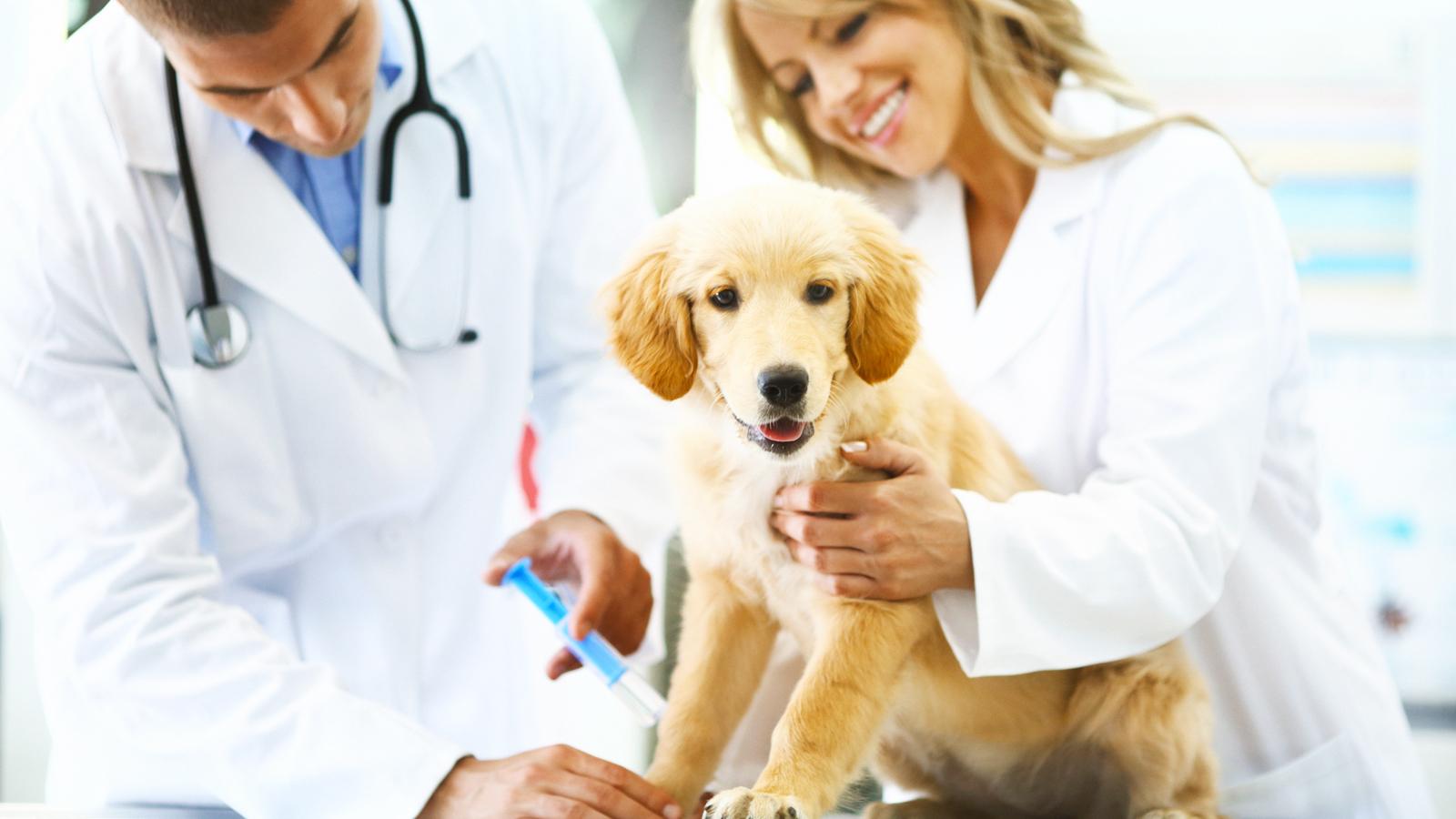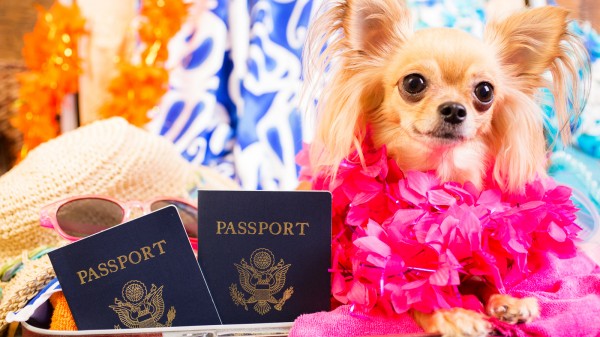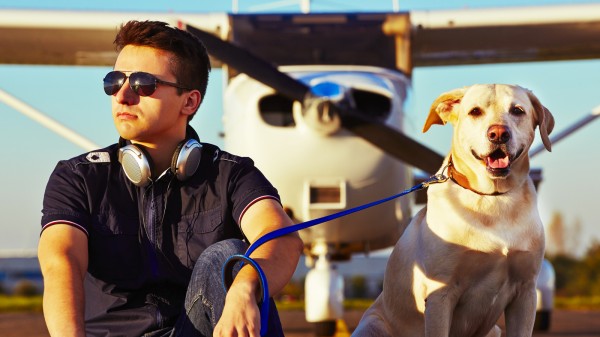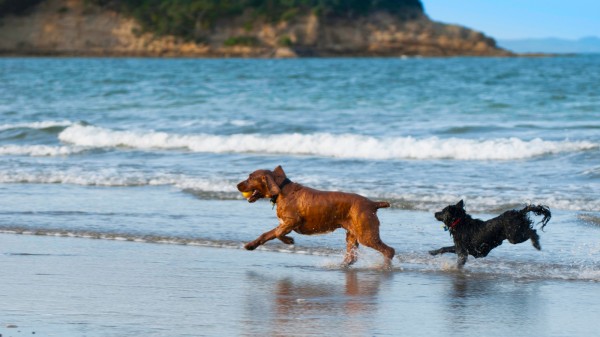Continuing our Moving Your Pet to Hawaii Guide, below are some helpful tips and recommendations to help make the process even easier.
- Before You Book Your Flight
- Preparing for the Flight
- Checking In
- On the Plane
- After the Flight – Picking Up Your Pet
Before You Book Your Flight
1. Start scheduling appointments for your pet with your vet at least 27 weeks before planning to move to Hawaii. You will probably need to see the vet, on average, about 4 times. Also, it’s good to know that some of the travel incidents that occur with pets are commonly due to natural causes or pre-existing issues, so don’t forget to talk to your vet before the move in order to discuss concerns and schedule a health screening.
Start scheduling appointments for your pet with your vet at least 27 weeks before planning to move to Hawaii
2. Before choosing which airline your pet will fly with, check out different airline websites, customer reviews, and traveling requirements for moving pets to Hawaii. This will ensure you know all of the airline’s pet rules (temperature regulations, how many pets they allow on the aircraft, etc.), that you like their offered services, and that you will make the best selection for your pet. (You can check airline animal incident reports, too.) This will also ensure you understand your selected airline’s specific requirements for moving to Hawaii with pets before purchasing a ticket. You may have to plan your arrival around the rules of your chosen airline.
3. Instead of booking online, book your flight with an airline agent. This will allow you to ask some additional questions. However, don’t expect the airline agent to know everything about traveling with pets. They might not be knowledgeable about pet requirements (or dare we say it, might be a trainee). You may want to ask right off the bat if they are knowledgeable in this area, or if there is someone who is more knowledgeable that you could speak to. Again, check your chosen airline’s website for their specific rules before calling an agent.
4. Make sure you book your flight for a date that your pet is eligible for. If you bring your pet to Hawaii before your pet meets the Department of Agriculture’s requirements, your pet will be quarantined. Check your pet’s eligibility date with the correct microchip number 3-5 weeks after your pet’s OIE-FAVN blood sample is sent into the lab. (The website is updated weekly.)
5. Try not to book a flight for your pet during the busiest times of the year, like holidays. You don’t want your pet to be subjected to rushed or overcrowded conditions, so if possible, avoid moving your pet to Hawaii during really busy times of the year.
6. It is recommended that you avoid transporting pets during the hottest and coldest times of the year. If you are flying from a hotter/cooler climate area, or during the hotter/cooler times of the year, you may want to plan accordingly. For example, if you are flying in summer, you may want to schedule a flight that arrives in the morning, as temperatures will be cooler (this will also allow plenty of time to get to the quarantine office). Planes can get really cold when they’re in the air, and can be really hot when the plane is grounded, so keep this in mind when asking questions, choosing a date to fly, and preparing your pet’s kennel.
7. If you have a short-nosed breed (Pug, Persian, etc.) be sure to take extra precaution. The Humane Society of the United States recommends never flying this type of breed as cargo. If you do have to fly them as cargo, use larger than needed kennels and larger water dishes to minimize the chance of them overheating. High temperatures associated with high humidity typically peak during the summer months (May through October). It is recommended that you fly short-nosed animals in the cooler times of the year, or early in the morning or at night. There are special requirements for transporting short-nosed breeds to Hawaii (see FAQ #3), so ask about them if your pet falls into this category.
8. Be conscious of where you are seated on the plane. Sometimes flying first-class is the best way to transport your pet (if they are allowed in the cabin) due to increased attention by flight attendants and more space. If you aren’t flying first class, we recommend getting a window or center seat, where the under-the-seat space is better than the aisle seat.
9. Try to plan your trip as a direct non-stop flight to Hawaii, or with as few layovers as possible. If you will be flying from a really far distance (for example, the east coast of the U.S. or further), you may want to consider breaking your trip up and staying overnight somewhere before flying all the way to Hawaii. It all depends on what you think will work best for your pet. Owners know their “babies” best. Remember, if you are flying from a specific rabies-free country, you will need to book a direct flight to Hawaii.
Try to plan your trip as a direct non-stop flight to Hawaii
10. The best time to arrive in Hawaii with a pet (as far as quarantine goes) is during 8:00 AM-2:30 PM Monday through Wednesday. Plan your flight accordingly. Make sure you are arriving during normal business hours and during a time that is best for your pet, especially if they are sensitive to hot or cold temperatures. Also, make sure you know the State holidays and whether or not certain services and businesses will be available or open.
11. If doing Direct Airport Release, make sure you arrive at least two hours before the airport animal quarantine department closes. If flying to Honolulu International Airport, make sure that you and your pet arrive before 3:00 PM if you plan on taking your pet home that day.
12. If your pet has to be quarantined, do everything you can to make sure they are in quarantine for 30 days or less. It is said that pets that are in quarantine for 30 days or less recover well, while pets that are in quarantine longer than 30 days can show signs of trauma.
—
Preparing for the Flight
13. Arrange for Direct Airport Release at whatever island is your final destination. You will need to call ahead of time and make sure a licensed inspector will be available on the day and at the time of your pet’s arrival. You will also need a Neighbor Island Inspection Permit ($145 fee).
14. If able, crate-train your pet starting at least 30 days prior to the flight to Hawaii. This will get them more comfortable with what’s going on and prepare them for the trip. Many of the incidents that do occur with pet travel happen when pets injure themselves while trying to bite or claw their way out of their travel crate, showing the importance of crate acclimation. If your pet has to ride in cargo, you will feel confident that you did everything you could to make the trip as comfortable and safe as possible for them.
15. Make sure you refill any medications your pet needs on your last visit with your veterinarian. The last thing you want to worry about is refilling your pet’s medication(s) when you are unpacking and getting everything organized at your new home. Fill your pet’s medication with your vet before the trip, so you will have one less thing to do when you get to Hawaii. We recommend filling any prescriptions on your last visit with your veterinarian, when you go in to get your pet’s health certificate.
Note: Kevin O’Brien of PetRelocation.com, which specializes in pet transport, said: “Sedation is by far the worst possible thing you can do to your pet before their long flight. Sedation, mixed with altitude, creates a dangerous cocktail that prevents the animals from using their natural ability to regulate their body temperature and to control their own stress. We suggest that the human take the pill, as the pet will have a better experience than most humans when flying with commercial airlines.”
16. Trim your pet’s nails, or have your vet do it when you go in for your pet’s health certificate. It is recommended that you trim your pet’s nails a week or so before the flight for added safety.
17. Add a family T-shirt or favorite toy with familiar smell in your pet’s kennel. It is comforting for pets and is recommended.
18. Make sure your pet is wearing a collar and tag with current contact information. In the rare case your pet gets out of its kennel, you want to be sure they have a collar and tag on and that it has your current contact information on it. Be sure to double check that your pet’s collar and tag have the correct address and phone number before the trip. It is also recommended that your pet wears a collar that can’t get caught in the kennel door – you may have to take your pet out of their carrier going through the airport and want to eliminate mishaps.
19. Make sure you have a leash with you (and readily available) at the airport. Once you check in at the baggage counter, you and your pet will probably be taken to a designated area so airline personnel can inspect the kennel. Your pet will be taken out of its kennel for this, so make sure you have a leash – this is another good reason to have a collar with updated contact information on your pet.
Make sure you have a leash with you (and readily available) at the airport
20. Carry 2-3 copies of required paperwork in an easy-to-reach location.
21. Carry a photo of your pet with you. It is also recommended you have a photo attached to your pet’s kennel with the rest of their paperwork. This way, if your pet does get lost, it will be easier for people to know what your pet looks like if they need to search for them.
22. Fill up your pet’s water dish and put it in the freezer the night before the trip. By freezing your pet’s water in the dish that will be flying with them, you can ensure that they will have water throughout most of the flight (and hopefully avoid spills). If you forget to do this, you can always add some ice cubes to the dish right before you hand your pet over to airline personnel. Just make sure you don’t forget the water dish in the freezer…you may want to have a backup just in case. If you’re using a pet water bottle, you can even freeze half and then fill the rest with water, but make sure the bottle is the “no-leak” variety, so your pet’s kennel will stay dry.
23. Double check everything. Make sure you do a final check of the 5 Day-or-Less checklist, your pet’s kennel, contact information, etc. Do you have all of the required paperwork? Your pet’s medication? Did you arrange for a Direct Release inspection? Making sure that everything is ready to go and that nothing gets left behind will ensure your pet gets quickly and safely to the islands. We recommend reviewing the Humane Society of the United States traveling tips for further information on traveling with a pet.
—
Checking In
24. Arrive at the airport earlier than you normally would, so you have plenty of time to make sure your pet is situated and comfortable, that all the necessary paperwork is attached to the kennel, etc. If you have a dog, you can let them stretch their legs after the car ride and before the flight. Some airlines require pets to be checked in at least 2 hours early, so be sure to ask your airline what their specific requirements are for check-in times.
25. Don’t forget to write down when your pet was last given food and water. This needs to be written down on the “Shipper’s Declaration” sticker on your pet’s kennel. The USDA requires this to be done within 4 hours of check-in. It is recommended that you don’t give your pet food too close to the flight time as they might get an upset stomach, or nervous. 4-6 hours is a recommended time to give your pet food before a flight, while it’s okay to give them a little water an hour or so before a flight. This means to make sure you leave your pet’s food dish empty – don’t give them food right before the flight.
26. Give your pet a final chance to use the bathroom before you walk into the airport. Many airports have specific places for your pet to go to the bathroom before a flight. Be sure to look for a designated area, or ask an employee where you should take your pet.
27. When heading to the check-in counter, look to see if they have a line for odd-size baggage. If they do, you will want to stand in that line as you will probably be directed to that line anyway. Make sure you have your pet’s health certificate, the Neighbor Island Inspection Permit (if applicable), and all necessary paperwork. You will need to show the paperwork to airline personnel at the counter.
28. If you are traveling from a specific rabies-free country, be sure to show the “Carrier’s Statement” to airline personnel. You will need this form to be completed and signed by different airline personnel throughout the trip, and want this to be done correctly to ensure Direct Airport Release. You should only need to present the form at the check-in counter, and possibly once you’re on the airplane, but keep it easily accessible just in case.
—
On the Plane
29. Once you’re on the plane, notify a flight attendant that you have a pet on board – either as a carry-on, or one that’s riding in cargo. Also, kindly ask that the pilot be informed. You will be notified that your pet is safely aboard the aircraft via a flight attendant. They will hand you a baggage receipt from the aircraft crew once your pet is on the plane.
Hawaii: Arguably the best place to live for pet lovers
—
After the Flight – Picking Up Your Pet
30. If you are from a specific rabies-free country, make sure you have the “Carrier’s Statement” signed and completed before you leave the plane or gate area. This will ensure your pet will qualify for Direct Airport Release.
31. If your final destination is on a neighbor island, and you have a Neighbor Island Inspection Permit, be sure to show it to airline personnel at the gate, directly after you get off of the plane. Ask them where you should wait to pick up your pet. The inspector that you arranged for will inspect your pet and your pet’s required paperwork.
32. For international flights, your pet will need to go through US Customs before it gets brought to the airport’s quarantine holding facility for inspection. Airline personnel will bring your pet to both the US Customs and to the quarantine holding facility. You will have to wait a little longer before getting your pet because of this extra step. Be sure you ask airline personnel at the gate where the quarantine holding facility is at your particular airport. For Oahu, see the map to the Airport Animal Quarantine Station.
33. Once your pet is released from the airport or holding facility, they can no longer take the pet back. If you have to spend a couple of days in a hotel that doesn’t allow pets, you may want to consider letting your pet stay at the Animal Quarantine Station for a few days. It is a $224 flat rate fee for an animal that stays 0-5 days at the AQS. Fees for any additional days will be $18.70/day.
34. Pet owners should bring a baggage cart, etc. to transport their crated pet from the Airport Animal Quarantine Holding Facility. Animals must remain in their kennels at all times on airport property.
35. Make sure you arrange proper transportation for your pet off of airport property (or to the interisland terminal). You are responsible for arranging for your pet to be picked up from the airport and transported off the property. Airport security requires that your pet must remain in its kennel while on airport property. This means if you have a large animal, or multiple pets, you must have a vehicle that is large enough to hold your pet(s) in its kennel until you are completely off of airport property.
Helpful tips for moving your fur babies to the islands – because we love pets just as much as you do!






ARYAN
September 12, 2018
Do you need a car on rent? If yes, off-site rental agencies help to save your money. I also get the benefits from this.
Sulema Mankel
December 21, 2018
greath content!
hello.com
Douglas Macnaughton
January 17, 2019
Wow, this was great. Keep writing this kind of blogs, you will get a lot of people to this text if you continue writing this.
http://bounce.tucows.com/cgi-bin/bounce?id=search_v4¶ms=pos=1;cpc_id=122363;t=1540139755&url=https://www.nakedgirlsfun.com